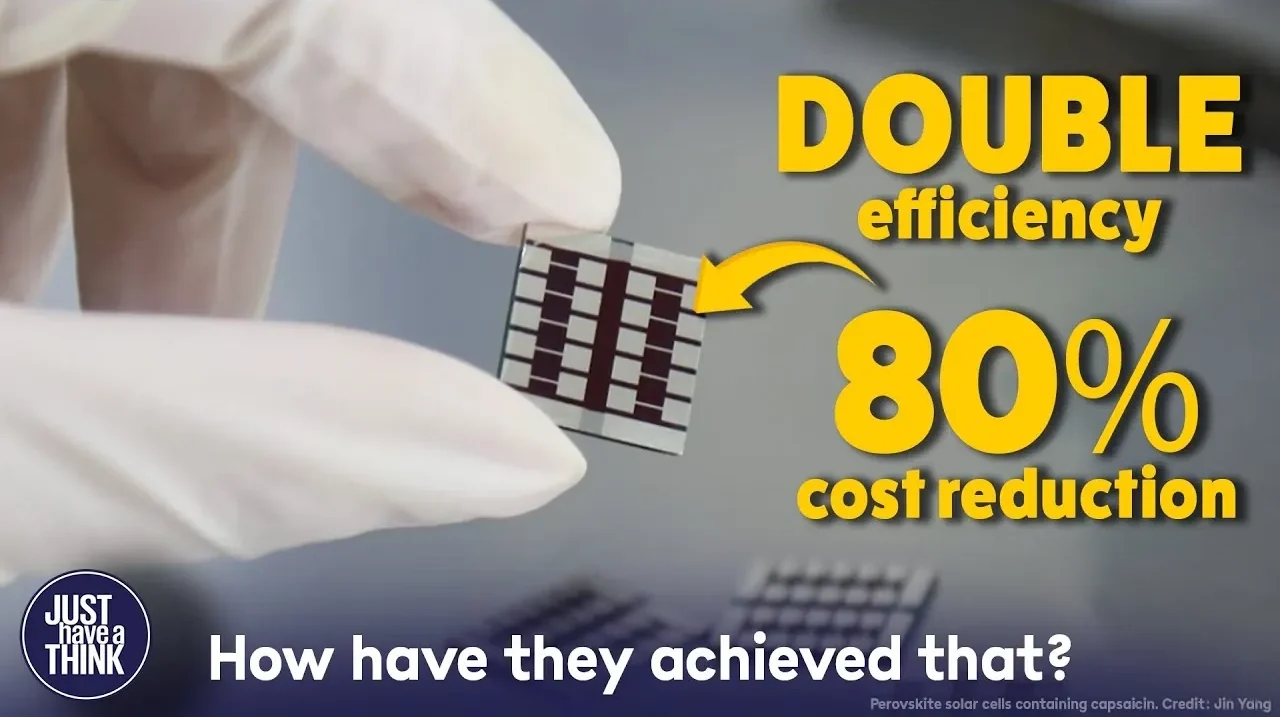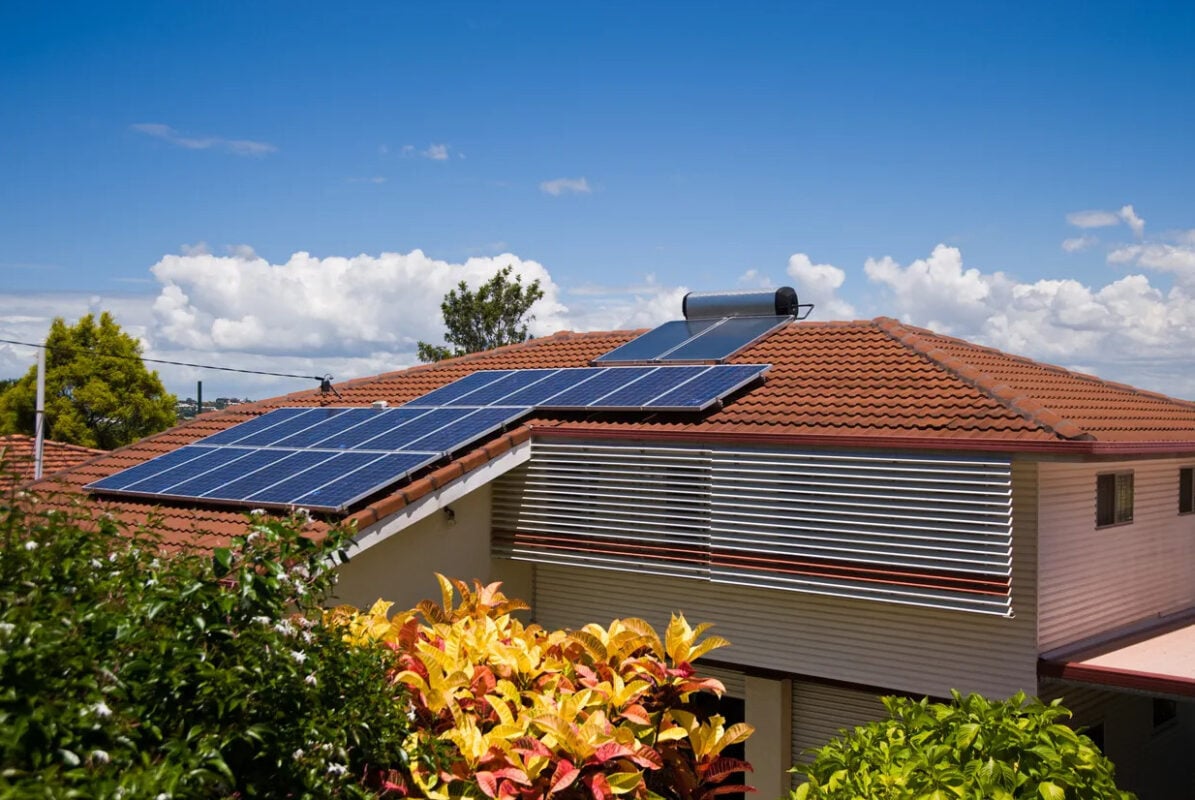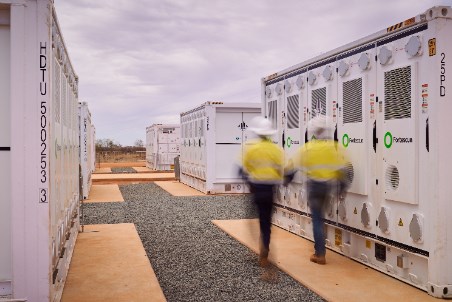Solar Power Breakthrough : Graphene Perovskite Hits 30.6% Efficiency, Slashing Solar Costs – Geeky Gadgets

Report on Graphene-Perovskite Solar Cell Technology and its Contribution to Sustainable Development Goals (SDGs)
1.0 Executive Summary
- A technological breakthrough integrating functionalized graphene into perovskite solar cells has achieved a record energy conversion efficiency of 30.6%.
- This innovation significantly advances several UN Sustainable Development Goals (SDGs), particularly SDG 7 (Affordable and Clean Energy), SDG 9 (Industry, Innovation, and Infrastructure), SDG 12 (Responsible Consumption and Production), and SDG 13 (Climate Action).
- Key advancements include substantial cost reductions, enhanced material durability, versatile application potential, and a high degree of environmental sustainability.
2.0 Technological Advancements and Performance Metrics
2.1 Unprecedented Energy Conversion Efficiency
The integration of functionalized graphene enhances electron mobility and minimizes resistive losses within perovskite solar cells, resulting in a laboratory-certified efficiency of 30.6%. This figure surpasses the performance of conventional silicon-based solar technologies, promising higher energy output under various conditions.
2.2 Advanced Material Composition
- Functionalized Graphene: Combined with localized metal nanoparticles, it improves conductivity and overall performance.
- Engineered Perovskite: Chemically modified to withstand environmental stressors such as heat, moisture, and UV degradation.
- Nano-film Encapsulation: A protective layer shields the cells from external elements, ensuring long-term durability and consistent performance.
3.0 Alignment with Sustainable Development Goals (SDGs)
3.1 SDG 7: Affordable and Clean Energy
- Cost Reduction: The technology replaces expensive metals like gold and silver, potentially reducing material costs by up to 80%, thereby making clean energy more affordable and accessible.
- Enhanced Output: Superior efficiency ensures higher energy generation, even in suboptimal conditions like low light or cloudy weather, increasing the reliability of clean energy sources.
3.2 SDG 9: Industry, Innovation, and Infrastructure
- Scalable Manufacturing: The technology is compatible with roll-to-roll manufacturing processes, facilitating efficient mass production and supporting the development of resilient, sustainable industrial infrastructure.
- Versatile Applications: The cells are optimized for diverse environments, from powering indoor Internet of Things (IoT) devices to outdoor applications such as rooftop panels and satellites, fostering technological innovation across multiple sectors.
3.3 SDG 12: Responsible Consumption and Production
- High Recyclability: Perovskite solar cells are reported to be 98% recyclable, promoting a circular economy and significantly reducing electronic waste compared to traditional solar panels.
- Low-Energy Production: The lightweight and flexible nature of the cells requires less energy for manufacturing, contributing to a smaller carbon footprint and more sustainable production patterns.
3.4 SDG 13: Climate Action
By providing a highly efficient, cost-effective, and scalable alternative to fossil fuel-based energy, this innovation is a critical tool for mitigating climate change and accelerating the global transition to renewable energy systems.
4.0 Future Prospects and Conclusion
4.1 Potential for Further Advancement
Ongoing research is focused on developing multi-junction cells capable of capturing a broader light spectrum, with projected efficiencies exceeding 35%. Such advancements could revolutionize utility-scale photovoltaics and further expand the integration of solar power into global energy infrastructure.
4.2 Conclusion
The development of graphene-enhanced perovskite solar cells represents a transformative step in photovoltaic technology. Its alignment with key Sustainable Development Goals through improved efficiency, cost-effectiveness, and environmental sustainability positions it as a pivotal solution for a global clean energy future.
Analysis of Sustainable Development Goals in the Article
1. Which SDGs are addressed or connected to the issues highlighted in the article?
The article on graphene-perovskite solar cells directly and indirectly addresses several Sustainable Development Goals (SDGs) by focusing on a technological innovation that promotes clean energy, sustainable industrial practices, and environmental responsibility.
-
SDG 7: Affordable and Clean Energy
This is the most prominent SDG addressed. The article’s core subject is a breakthrough in solar energy technology that makes it more efficient (“unprecedented energy conversion efficiency of 30.6%”), affordable (“drastically reduce production costs”), and accessible, directly contributing to the goal of ensuring access to clean energy for all.
-
SDG 9: Industry, Innovation, and Infrastructure
The article highlights a significant technological innovation (“breakthrough shatters the limits of traditional silicon-based technology”) and its potential for industrial application. It mentions “scalable roll-to-roll manufacturing for mass production,” which supports the development of resilient infrastructure and promotes inclusive and sustainable industrialization.
-
SDG 12: Responsible Consumption and Production
This goal is addressed through the sustainable attributes of the new solar cells. The article emphasizes their high recyclability (“98% recyclable”), reduced material use (replacing gold and silver), and energy-efficient production process (“requires less energy during production”), all of which promote sustainable production patterns and waste reduction.
-
SDG 13: Climate Action
By advancing a more efficient and accessible form of renewable energy, the technology provides a powerful tool for climate change mitigation. The article notes the technology’s “smaller carbon footprint” and its role in providing “clean and efficient energy sources,” which are essential for taking urgent action to combat climate change.
-
SDG 11: Sustainable Cities and Communities
The technology’s versatility and applications contribute to this goal. The article mentions its suitability for “rooftop solar panels” in residential and commercial settings and for powering “Internet of Things (IoT) devices,” which are integral to developing smart, sustainable cities with a reduced environmental impact.
2. What specific targets under those SDGs can be identified based on the article’s content?
-
SDG 7: Affordable and Clean Energy
- Target 7.2: By 2030, increase substantially the share of renewable energy in the global energy mix. The article’s technology, with its higher efficiency and lower cost, is poised to “propel solar energy into the mainstream,” directly supporting an increased share of solar power.
- Target 7.a: By 2030, enhance international cooperation to facilitate access to clean energy research and technology… and promote investment in energy infrastructure and clean energy technology. The article itself is a dissemination of information about a key breakthrough in clean energy research and technology.
-
SDG 9: Industry, Innovation, and Infrastructure
- Target 9.4: By 2030, upgrade infrastructure and retrofit industries to make them sustainable, with increased resource-use efficiency and greater adoption of clean and environmentally sound technologies. The graphene-perovskite solar cell is described as a “sustainable and environmentally friendly alternative” and a clean technology that improves resource-use efficiency (more energy from the same sunlight).
- Target 9.5: Enhance scientific research, upgrade the technological capabilities of industrial sectors… encouraging innovation. The entire article is about a scientific research breakthrough that upgrades the technological capabilities of the solar PV industry.
-
SDG 12: Responsible Consumption and Production
- Target 12.5: By 2030, substantially reduce waste generation through prevention, reduction, recycling and reuse. The article explicitly states that the “Perovskite solar cells are 98% recyclable, significantly reducing waste compared to conventional solar panels.”
3. Are there any indicators mentioned or implied in the article that can be used to measure progress towards the identified targets?
Yes, the article contains several explicit and implied indicators that can be used to measure progress.
-
Explicit Indicators:
- Energy Conversion Efficiency: The article states a record-breaking “30.6% efficiency,” which is a direct measure of technological advancement under SDG 7 and SDG 9. This surpasses the “industry standard of 26%.”
- Cost Reduction: A specific metric is provided: “cutting material costs by up to 80%.” This is a key indicator for measuring progress towards affordable energy (SDG 7).
- Recycling Rate: The statement that the cells are “98% recyclable” is a direct indicator for Target 12.5 (waste reduction).
-
Implied Indicators:
- Share of Renewable Energy (Indicator 7.2.1): The article implies that this technology will increase the adoption of solar energy, thus increasing its share in the global energy mix.
- CO2 Emissions per Unit of Value Added (Indicator 9.4.1): The mention of a “smaller carbon footprint” during production implies a lower level of CO2 emissions compared to traditional manufacturing, which can be measured.
- National Recycling Rate (Indicator 12.5.1): The high recyclability of the cells suggests that their widespread adoption could contribute to an increase in the national recycling rate for electronic waste.
- Investment in Research & Development: The breakthrough itself implies significant investment and success in R&D, a key measure for Target 9.5.
4. Create a table with three columns titled ‘SDGs, Targets and Indicators” to present the findings from analyzing the article.
| SDGs | Targets | Indicators |
|---|---|---|
| SDG 7: Affordable and Clean Energy | 7.2: Increase the share of renewable energy. 7.a: Promote access to clean energy research and technology. |
|
| SDG 9: Industry, Innovation, and Infrastructure | 9.4: Upgrade industries with clean and environmentally sound technologies. 9.5: Enhance scientific research and innovation. |
|
| SDG 11: Sustainable Cities and Communities | 11.6: Reduce the adverse per capita environmental impact of cities. |
|
| SDG 12: Responsible Consumption and Production | 12.5: Substantially reduce waste generation through recycling. |
|
| SDG 13: Climate Action | 13.3: Improve education and awareness-raising on climate change mitigation. |
|
Source: geeky-gadgets.com
What is Your Reaction?
 Like
0
Like
0
 Dislike
0
Dislike
0
 Love
0
Love
0
 Funny
0
Funny
0
 Angry
0
Angry
0
 Sad
0
Sad
0
 Wow
0
Wow
0




















































.jpg.webp?itok=0ZsAnae9#)



























